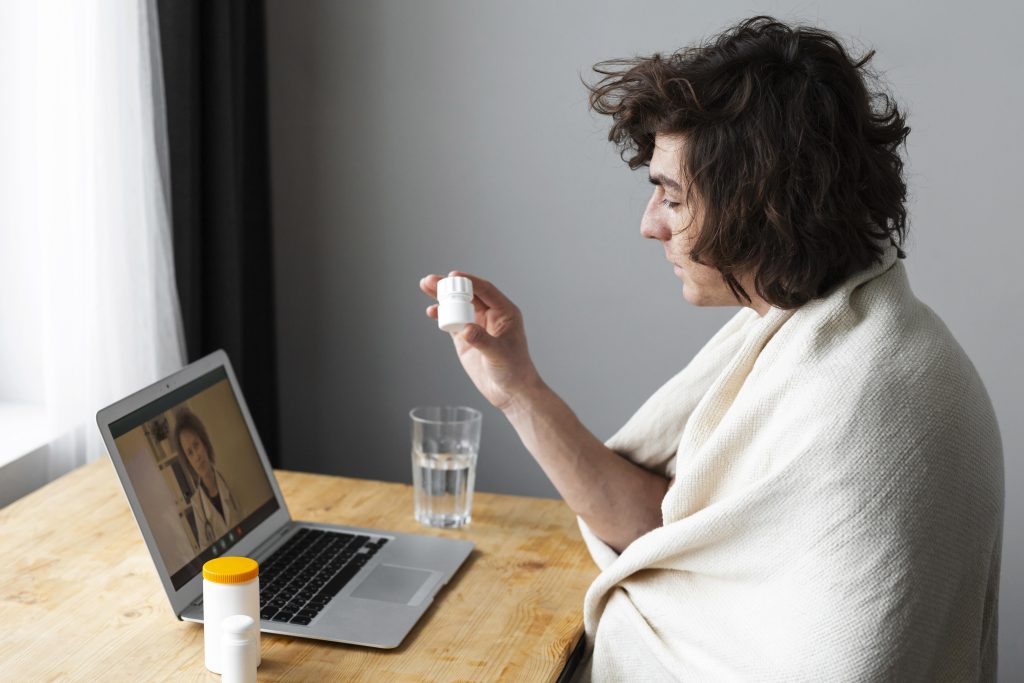As the days shorten and the air cools, many people notice their health dips a little. Autumn illness is common, as colder weather, damp air and time spent indoors make it easier for viruses to spread. Sniffles, coughs and fatigue often appear just as routines get busy again.
This guide covers 10 seasonal health issues, what signs to look for, and some simple ways to manage them, plus when to seek professional help.
Common Cold
The common cold is one of the most frequent autumn illnesses, spreading easily in schools, workplaces and on public transport. Typical symptoms include a sore throat, runny or blocked nose, sneezing and mild fatigue.
To feel better:
- Rest and stay warm
- Drink plenty of fluids
- Try steam inhalation or saline sprays
- Use paracetamol for aches if needed
Most colds clear in about a week, but if symptoms worsen, drag on beyond 10 days, or include a very high temperature, it’s worth checking in with a healthcare professional for reassurance and advice.
Seasonal Flu
Flu is another common autumn illness and tends to hit harder than a cold. Symptoms appear quickly, often with high temperature, body aches, chills and fatigue.
Managing flu:
- Rest and avoid pushing through
- Drink water and eat light meals
- Limit close contact to protect others

Each year, flu strains vary, which is why an annual flu vaccine can help reduce the chance of severe illness. If you’re in a higher-risk group or symptoms get worse, it’s important to seek professional advice, as flu can sometimes lead to more serious complications.
Hay Fever
Though often linked with spring, hay fever can be a familiar autumn illness. Instead of pollen, mould spores, damp leaves and indoor dust are common triggers. Symptoms may include sneezing, itchy eyes, a runny nose and congestion that feels similar to a cold.
To manage flare-ups:
- Close windows on windy days
- Clean surfaces to reduce mould
- Consider antihistamines if suitable
Unlike colds, hay fever symptoms usually persist or return in certain environments. If they begin interfering with sleep or daily activities, consider seeking advice to explore other supportive options.
Bronchitis
Bronchitis often follows a cold or flu when the airways stay irritated. Autumn’s damp, chilly air makes flare-ups more common. It can be acute, clearing in a few weeks, or chronic, which returns regularly.
Typical signs:
- Persistent cough with phlegm
- Chest tightness
- Fatigue
Most cases ease with rest, fluids and warm drinks. But if breathing feels harder, the cough worsens, or symptoms linger, it’s best to get checked for reassurance and proper care.
Sinus Infection
A sinus infection, or sinusitis, often follows a cold when blocked sinuses become inflamed. It’s a common autumn illness that can feel like stubborn congestion.
Signs to look for:
- Thick yellow or green discharge
- Facial pain or pressure
- Reduced sense of smell
- Blocked nose lasting over 10 days
Warm compresses, steam inhalation and staying hydrated can ease discomfort. If symptoms linger, get worse, or interfere with sleep, it’s worth seeking professional guidance.
Chest Infections
Chest infections sometimes follow colds or flu, especially in autumn when damp air irritates the lungs. You might notice your cough changes from dry to productive, producing phlegm. Other signs include chest discomfort, breathlessness and sometimes a fever.
Watch for:
- A cough lasting over 3 weeks
- Chest pain or heaviness
- Breathlessness even at rest
Milder cases often improve with rest and fluids, but don’t ignore symptoms that worsen. A healthcare professional can check whether it’s a straightforward infection or something requiring closer management, such as pneumonia. Acting early can make recovery smoother.
Cold Sores
Cold sores often flare in autumn when immunity dips or stress rises. They usually start with tingling or burning around the lips, followed by small blisters that crust and heal within a week.
Helpful tips:
- Apply antiviral creams at the first sign
- Keep lips moisturised in cold, windy weather
- Avoid sharing cutlery or cups during outbreaks
Most heal quickly, but if they’re frequent or severe, a consultation can help explore safe options to reduce recurrence.
Urinary Tract Infections (UTIs)
UTIs can appear at any time, but lifestyle shifts in autumn make them more likely. Cooler weather sometimes leads to dehydration, and clothing changes can play a part, too.
Signs of a UTI:
- Burning when passing urine
- Needing to wee often, but little comes out
- Cloudy urine or pain in the lower tummy
Hydration helps, but many cases require treatment. If prescribed, it’s essential to complete the full course to prevent recurrence. Frequent UTIs or sudden worsening should be checked promptly, as timely treatment can prevent complications and get you feeling better quickly.
Asthma Flare-Ups
Asthma symptoms often spike in autumn due to mould spores, viral infections and chilly air. Many people notice increased coughing, wheezing or shortness of breath.
Practical steps:
- Use your preventer inhaler as directed
- Carry your reliever inhaler
- Cover your mouth and nose with a scarf outdoors
- Book a review if symptoms worsen
It’s always safer to check in early rather than wait for issues to build. Managing asthma proactively in autumn helps reduce flare-ups, making daily activities more comfortable and safer throughout the colder months.
Gastroenteritis
Gastroenteritis, or the “stomach bug”, is another autumn illness that spreads rapidly, especially in schools, offices and households. It’s often caused by viruses like norovirus.
Common symptoms:
- Sudden diarrhoea
- Vomiting
- Stomach cramps
- Extreme tiredness
Most cases ease within 48 hours. Focus on hydration, using small sips of water or oral rehydration solutions. Handwashing with soap (not just sanitiser) is the best prevention. If illness persists beyond two days or if symptoms are severe, such as dehydration or blood in stools, seek professional advice promptly.
How WePrescribe Can Help Manage Autumn Illnesses
Not feeling well but short on time? WePrescribe offers discreet online consultations with UK-registered prescribers; no need to wait in line at a clinic or pharmacy.
The process is simple:
- Complete a secure online consultation
- A qualified clinician reviews your answers
- If suitable, approved treatments are prescribed and delivered directly
We focus on safe, convenient access to expert guidance. Whether you’re struggling with a stubborn cold sore, a UTI, or another autumn illness, our clinicians can help identify the right next steps. Need to reach us? Contact us today without delay.

Autumn brings cosy jumpers, crunchy leaves, and, let’s be honest, a few health hiccups too. Whether it’s sniffles, stomach bugs, or something that just doesn’t feel quite right, it’s okay to ask for help.
If you’re not feeling yourself, start with a quick consultation. A little support now could make a big difference later on, and we’re here if you need us.


